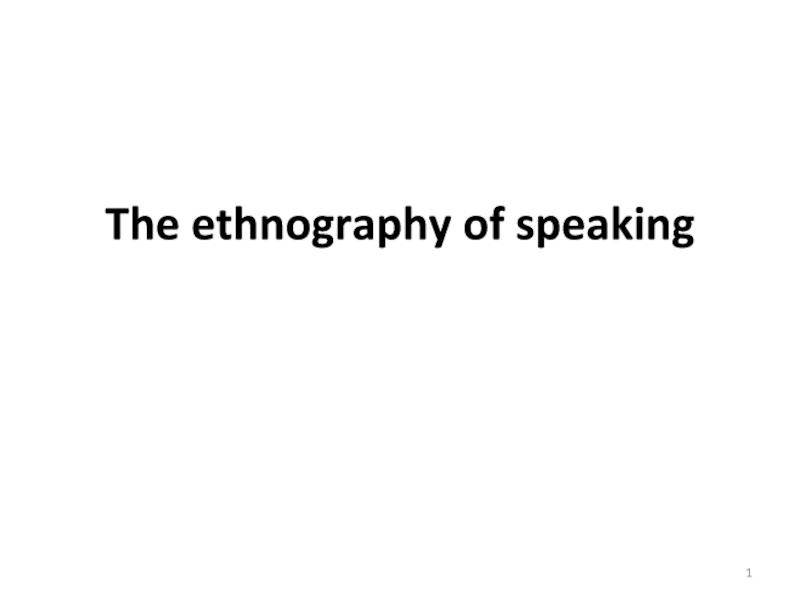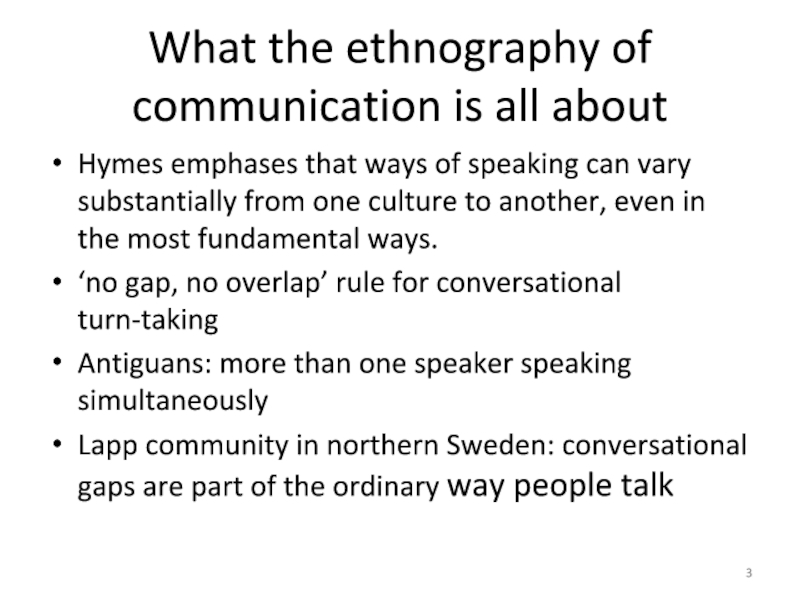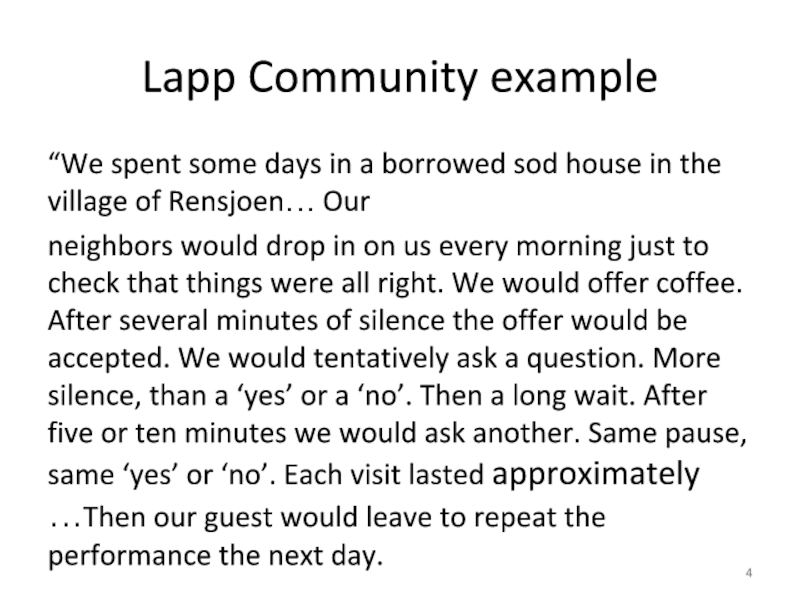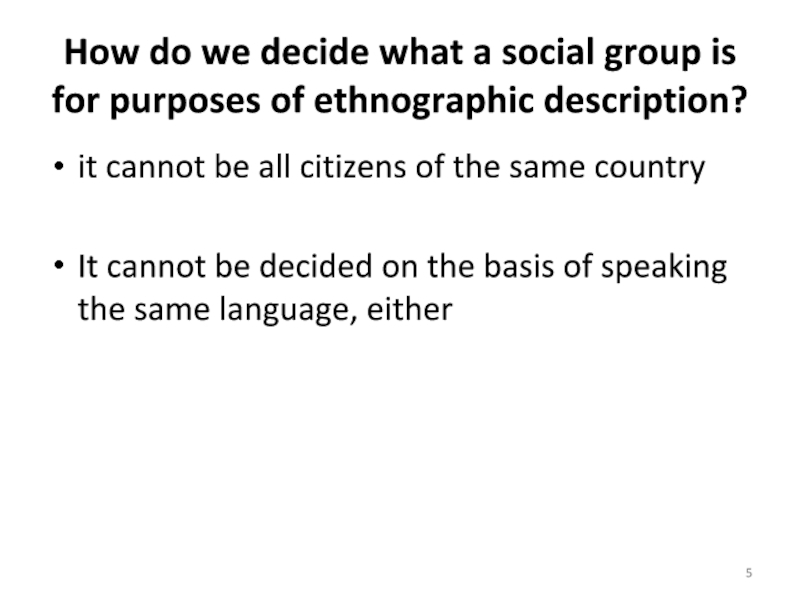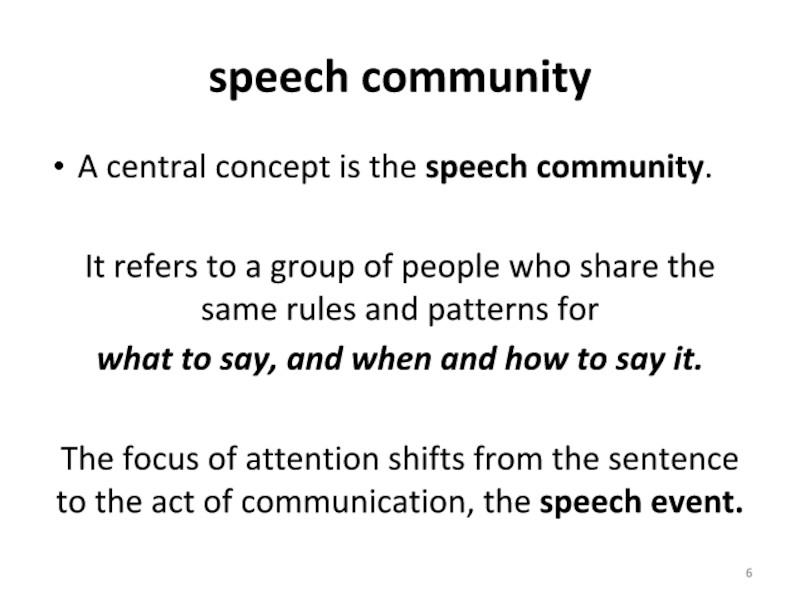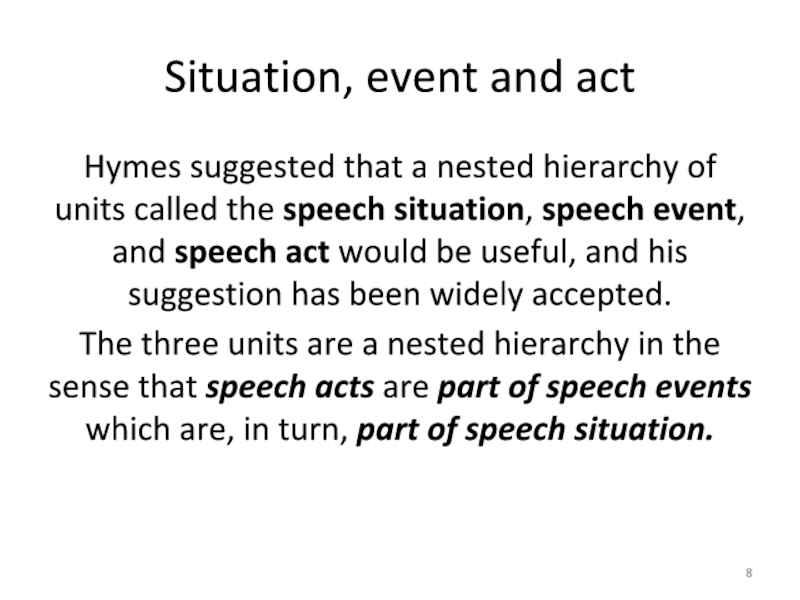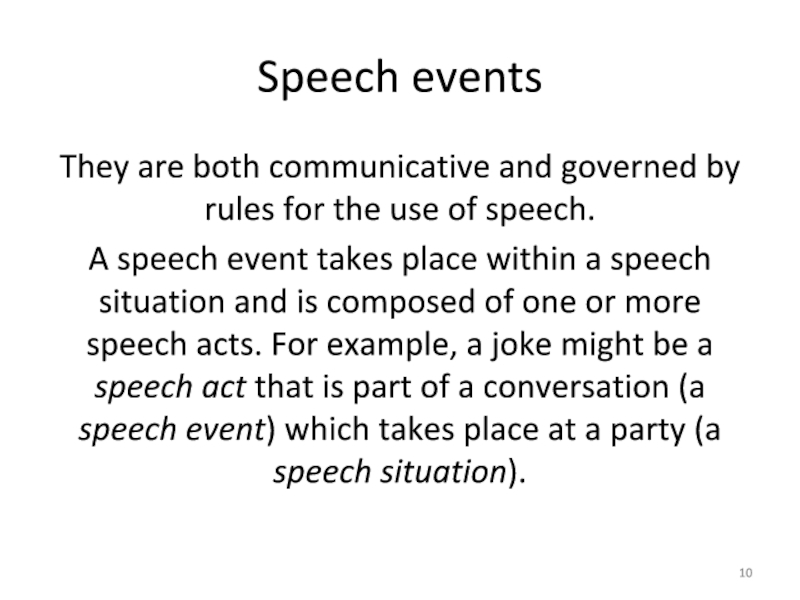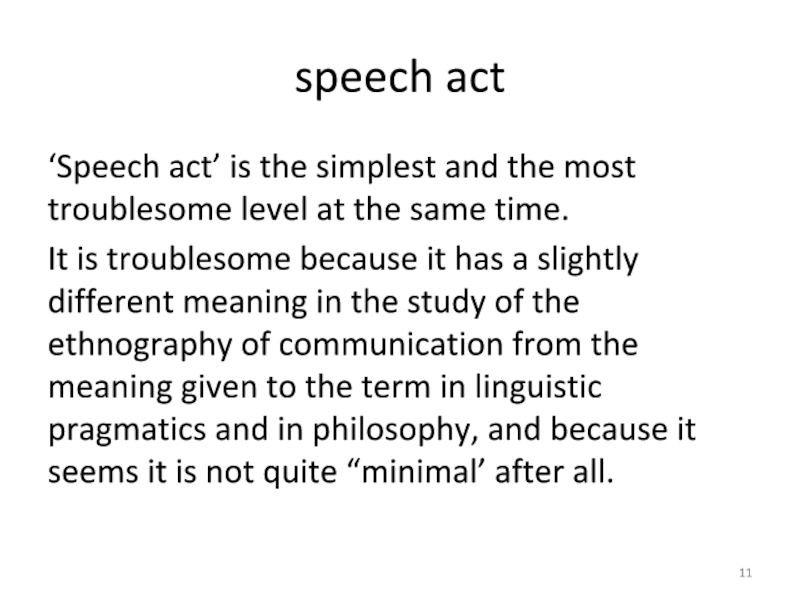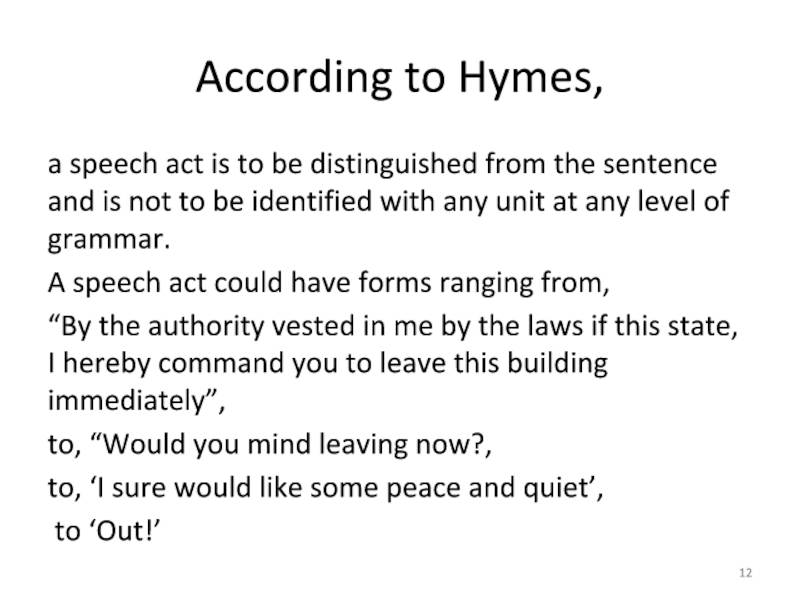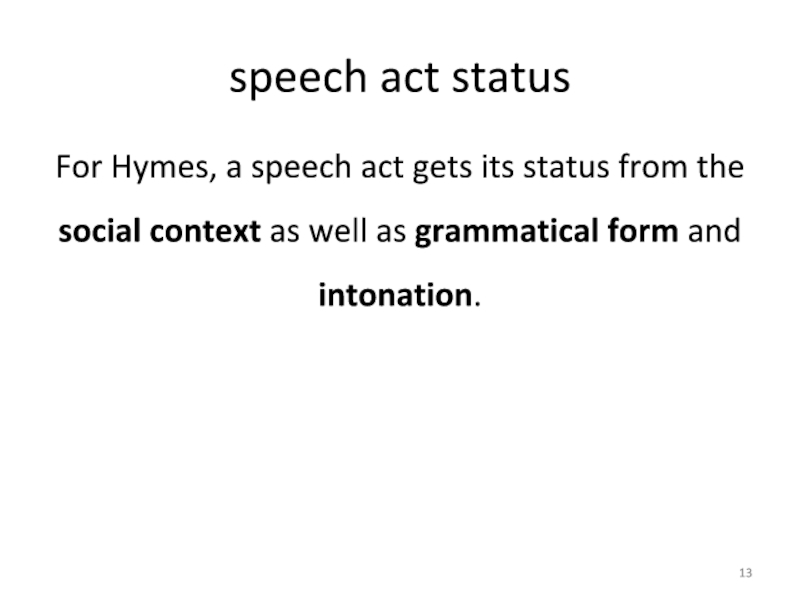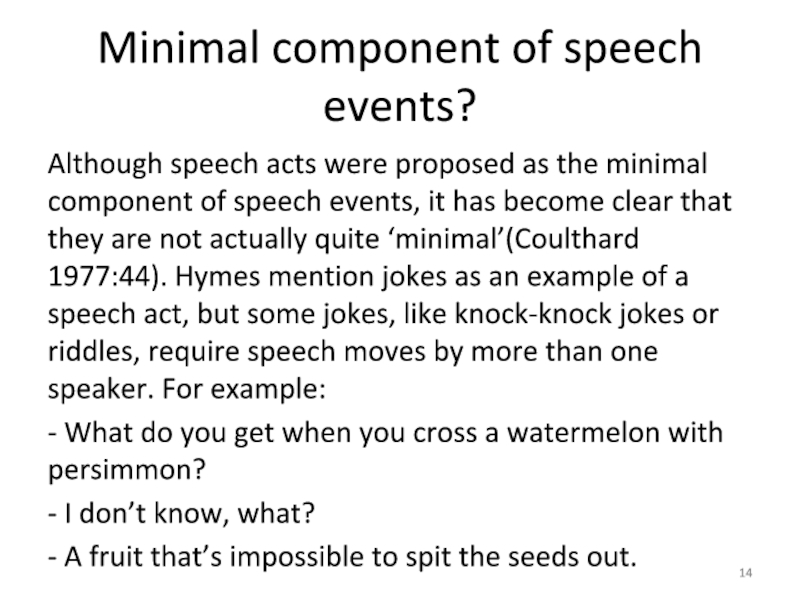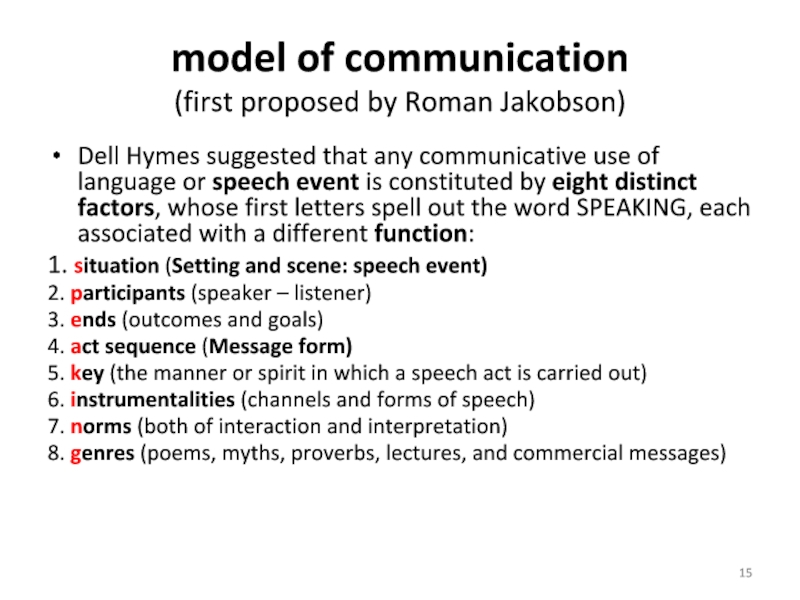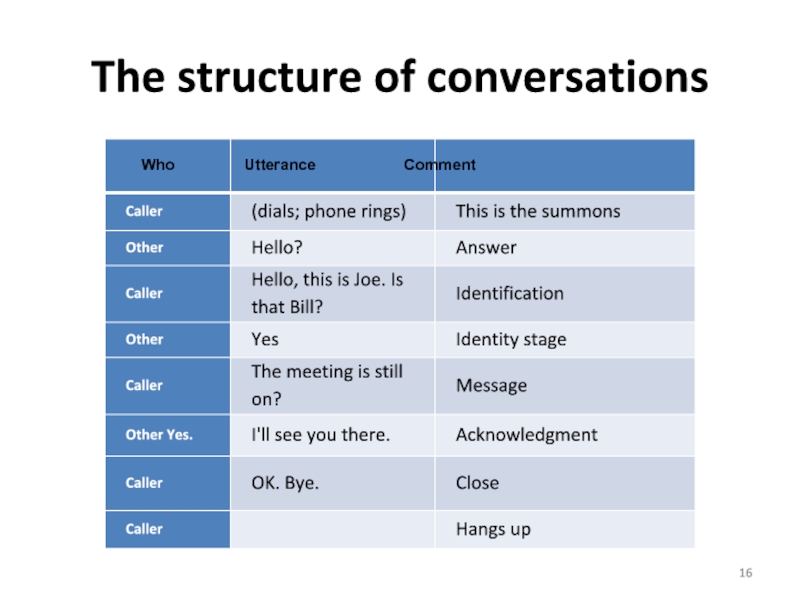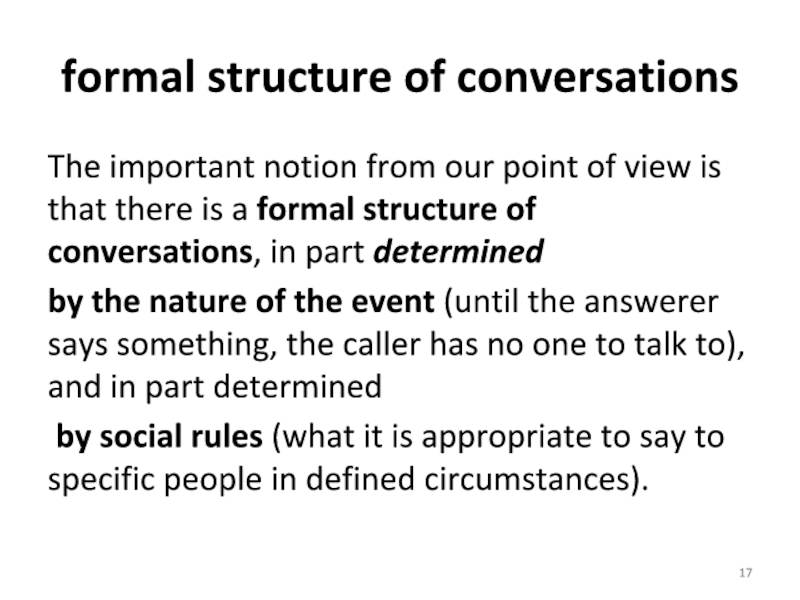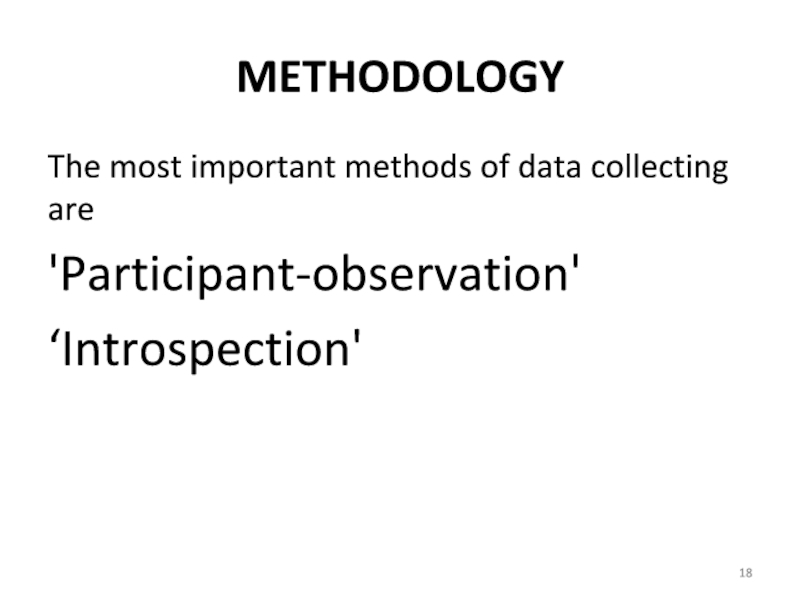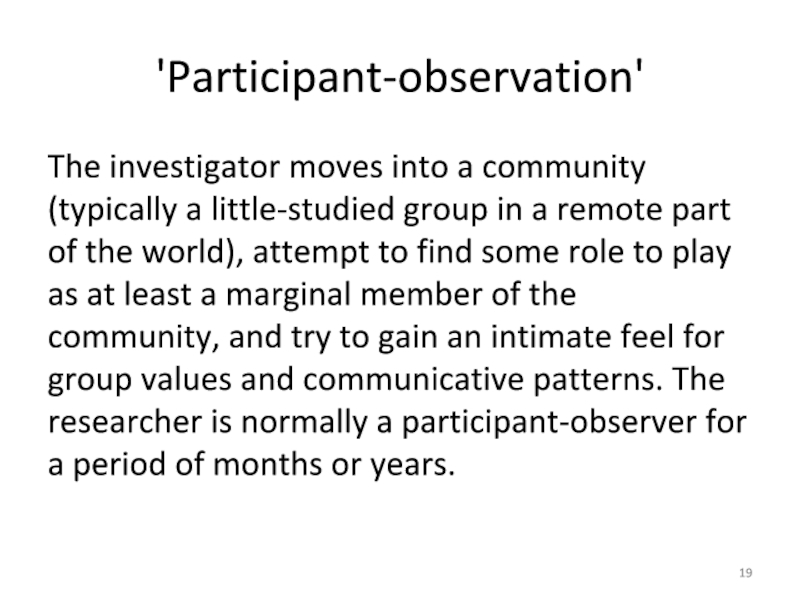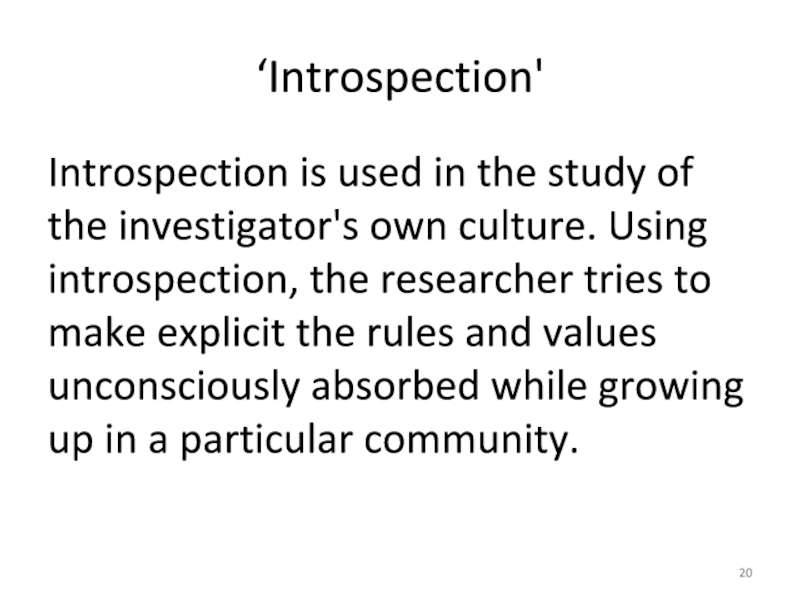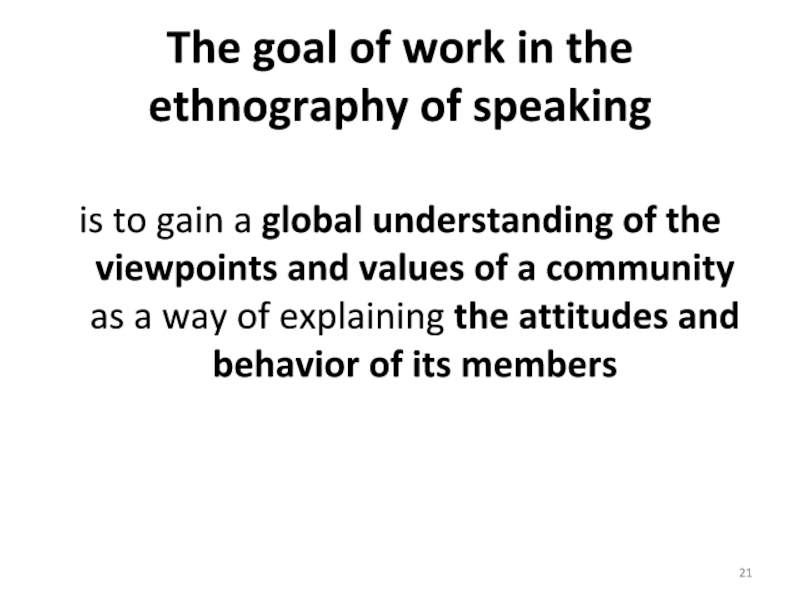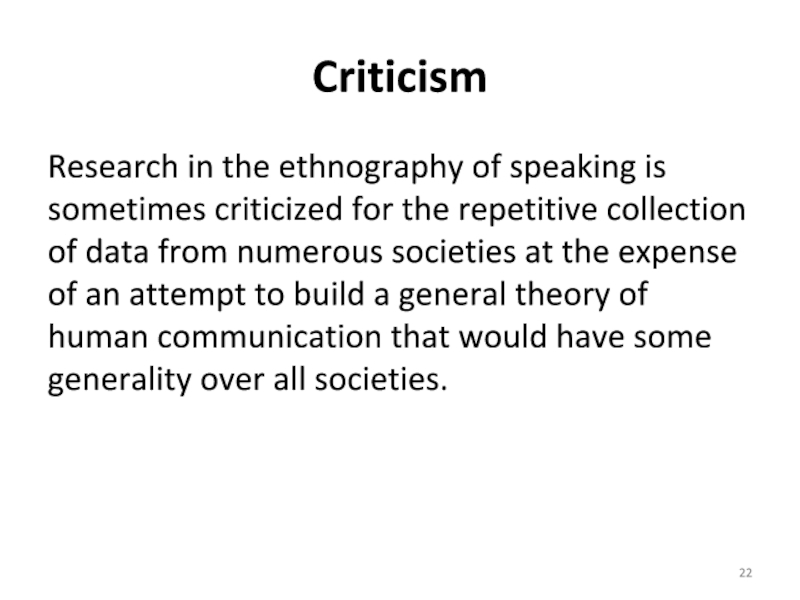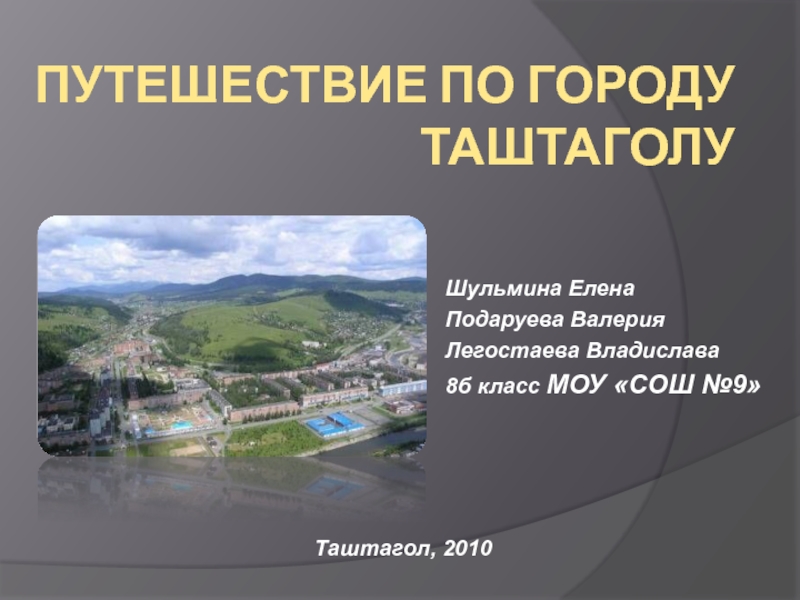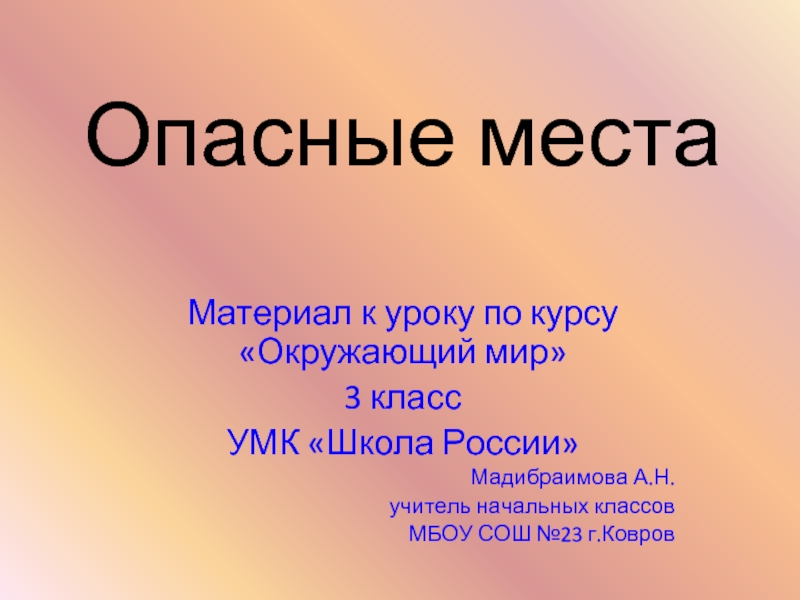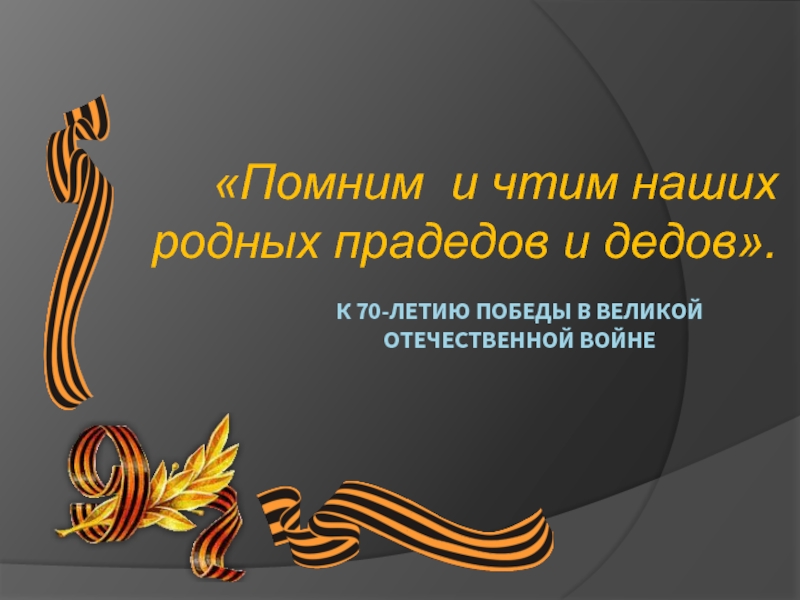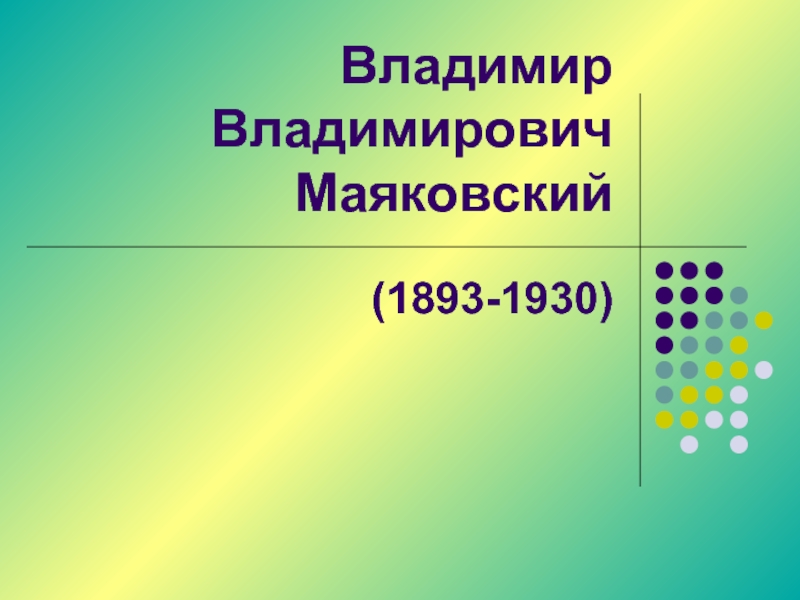- Главная
- Разное
- Дизайн
- Бизнес и предпринимательство
- Аналитика
- Образование
- Развлечения
- Красота и здоровье
- Финансы
- Государство
- Путешествия
- Спорт
- Недвижимость
- Армия
- Графика
- Культурология
- Еда и кулинария
- Лингвистика
- Английский язык
- Астрономия
- Алгебра
- Биология
- География
- Детские презентации
- Информатика
- История
- Литература
- Маркетинг
- Математика
- Медицина
- Менеджмент
- Музыка
- МХК
- Немецкий язык
- ОБЖ
- Обществознание
- Окружающий мир
- Педагогика
- Русский язык
- Технология
- Физика
- Философия
- Химия
- Шаблоны, картинки для презентаций
- Экология
- Экономика
- Юриспруденция
Lecture 2 презентация
Содержание
- 1. Lecture 2
- 2. The ethnography of speaking The
- 3. What the ethnography of communication is all
- 4. Lapp Community example “We spent some days
- 5. How do we decide what a social
- 6. speech community A central concept is the
- 7. Saville-Troike (1982) A valuable addition to understanding
- 8. Situation, event and act Hymes suggested that
- 9. speech situation ‘situations associated with (or marked
- 10. Speech events They are both communicative and
- 11. speech act ‘Speech act’ is the simplest
- 12. According to Hymes, a speech act is
- 13. speech act status For Hymes, a speech
- 14. Minimal component of speech events? Although speech
- 15. model of communication (first proposed by
- 16. The structure of conversations Who Utterance Comment
- 17. formal structure of conversations The important notion
- 18. METHODOLOGY The most important methods of data collecting are 'Participant-observation' ‘Introspection'
- 19. 'Participant-observation' The investigator moves into a community
- 20. ‘Introspection' Introspection is used in
- 21. The goal of work in the ethnography
- 22. Criticism Research in the ethnography of speaking
Слайд 2
The ethnography of speaking
The ethnography of speaking- or, more generally, the
The study of the ethnography of communication was initiated by Dell Hymes in the early 1960s.
Слайд 3What the ethnography of communication is all about
Hymes emphases that ways
‘no gap, no overlap’ rule for conversational turn-taking
Antiguans: more than one speaker speaking simultaneously
Lapp community in northern Sweden: conversational gaps are part of the ordinary way people talk
Слайд 4Lapp Community example
“We spent some days in a borrowed sod house
neighbors would drop in on us every morning just to check that things were all right. We would offer coffee. After several minutes of silence the offer would be accepted. We would tentatively ask a question. More silence, than a ‘yes’ or a ‘no’. Then a long wait. After five or ten minutes we would ask another. Same pause, same ‘yes’ or ‘no’. Each visit lasted approximately …Then our guest would leave to repeat the performance the next day.
Слайд 5How do we decide what a social group is for purposes
it cannot be all citizens of the same country
It cannot be decided on the basis of speaking the same language, either
Слайд 6speech community
A central concept is the speech community.
It refers to a
what to say, and when and how to say it.
The focus of attention shifts from the sentence to the act of communication, the speech event.
Слайд 7Saville-Troike (1982)
A valuable addition to understanding speech community: speech communities should
That is, each individual speaker can, and probably does, belong simultaneously to several speech communities; some of the smaller ones included in larger ones, and some separate from the others.
Слайд 8Situation, event and act
Hymes suggested that a nested hierarchy of units
The three units are a nested hierarchy in the sense that speech acts are part of speech events which are, in turn, part of speech situation.
Слайд 9speech situation
‘situations associated with (or marked by the absence of) speech’
As Hymes sees it, speech situations are not purely communicative; they may be composed of both communicative and other kinds of e
vents. Speech situations are not themselves subject to rules of speaking, but can be referred to by rules of speaking as contexts.
Слайд 10Speech events
They are both communicative and governed by rules for the
A speech event takes place within a speech situation and is composed of one or more speech acts. For example, a joke might be a speech act that is part of a conversation (a speech event) which takes place at a party (a speech situation).
Слайд 11speech act
‘Speech act’ is the simplest and the most troublesome level
It is troublesome because it has a slightly different meaning in the study of the ethnography of communication from the meaning given to the term in linguistic pragmatics and in philosophy, and because it seems it is not quite “minimal’ after all.
Слайд 12According to Hymes,
a speech act is to be distinguished from the
A speech act could have forms ranging from,
“By the authority vested in me by the laws if this state, I hereby command you to leave this building immediately”,
to, “Would you mind leaving now?,
to, ‘I sure would like some peace and quiet’,
to ‘Out!’
Слайд 13speech act status
For Hymes, a speech act gets its status from
Слайд 14Minimal component of speech events?
Although speech acts were proposed as the
- What do you get when you cross a watermelon with persimmon?
- I don’t know, what?
- A fruit that’s impossible to spit the seeds out.
Слайд 15model of communication
(first proposed by Roman Jakobson)
Dell Hymes suggested
1. situation (Setting and scene: speech event)
2. participants (speaker – listener)
3. ends (outcomes and goals)
4. act sequence (Message form)
5. key (the manner or spirit in which a speech act is carried out)
6. instrumentalities (channels and forms of speech)
7. norms (both of interaction and interpretation)
8. genres (poems, myths, proverbs, lectures, and commercial messages)
Слайд 17formal structure of conversations
The important notion from our point of view
by the nature of the event (until the answerer says something, the caller has no one to talk to), and in part determined
by social rules (what it is appropriate to say to specific people in defined circumstances).
Слайд 18METHODOLOGY
The most important methods of data collecting are
'Participant-observation'
‘Introspection'
Слайд 19'Participant-observation'
The investigator moves into a community (typically a little-studied group in
Слайд 20
‘Introspection'
Introspection is used in the study of the investigator's own culture.
Слайд 21The goal of work in the ethnography of speaking
is to gain
Слайд 22Criticism
Research in the ethnography of speaking is sometimes criticized for the
